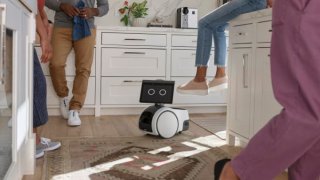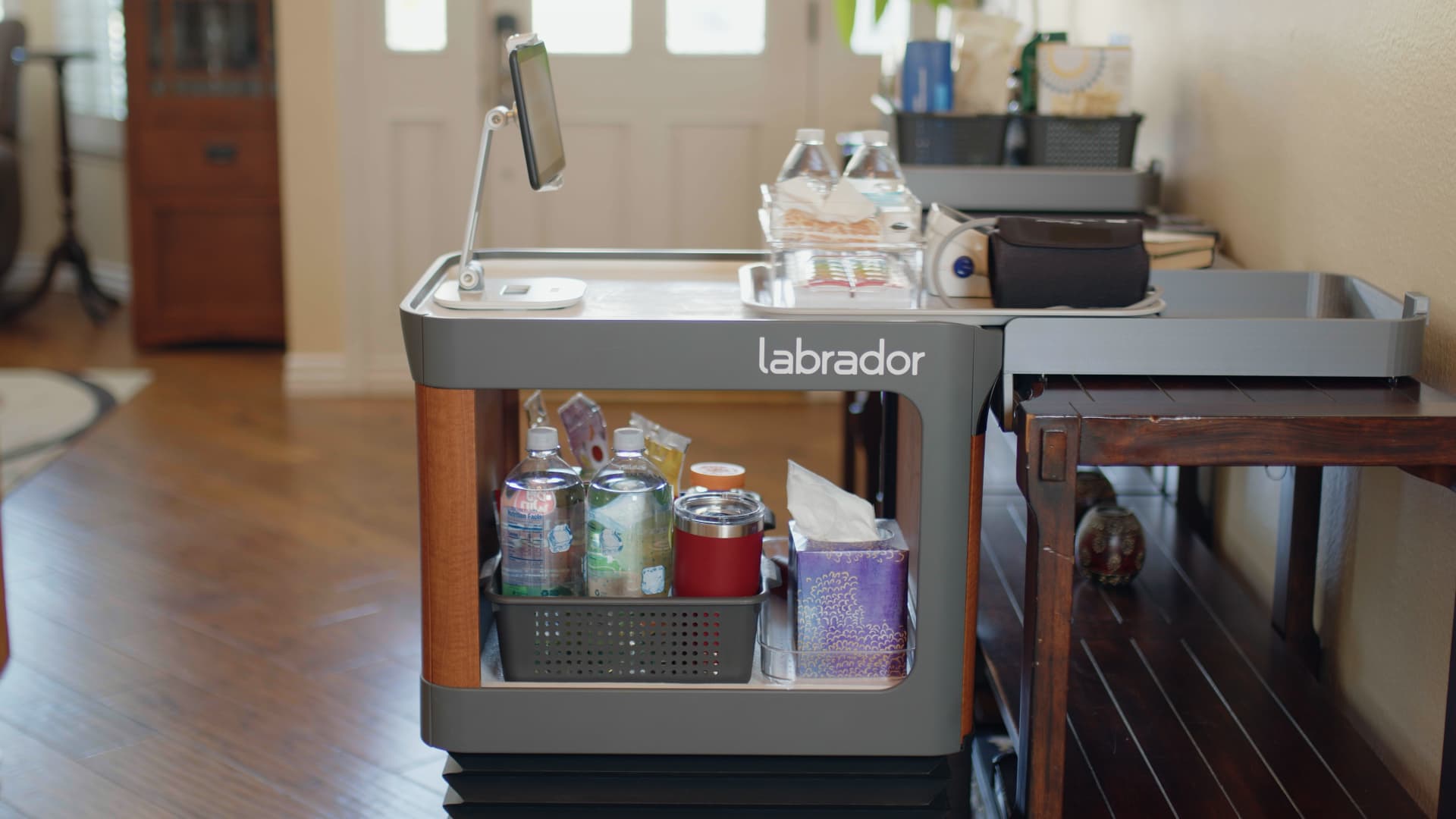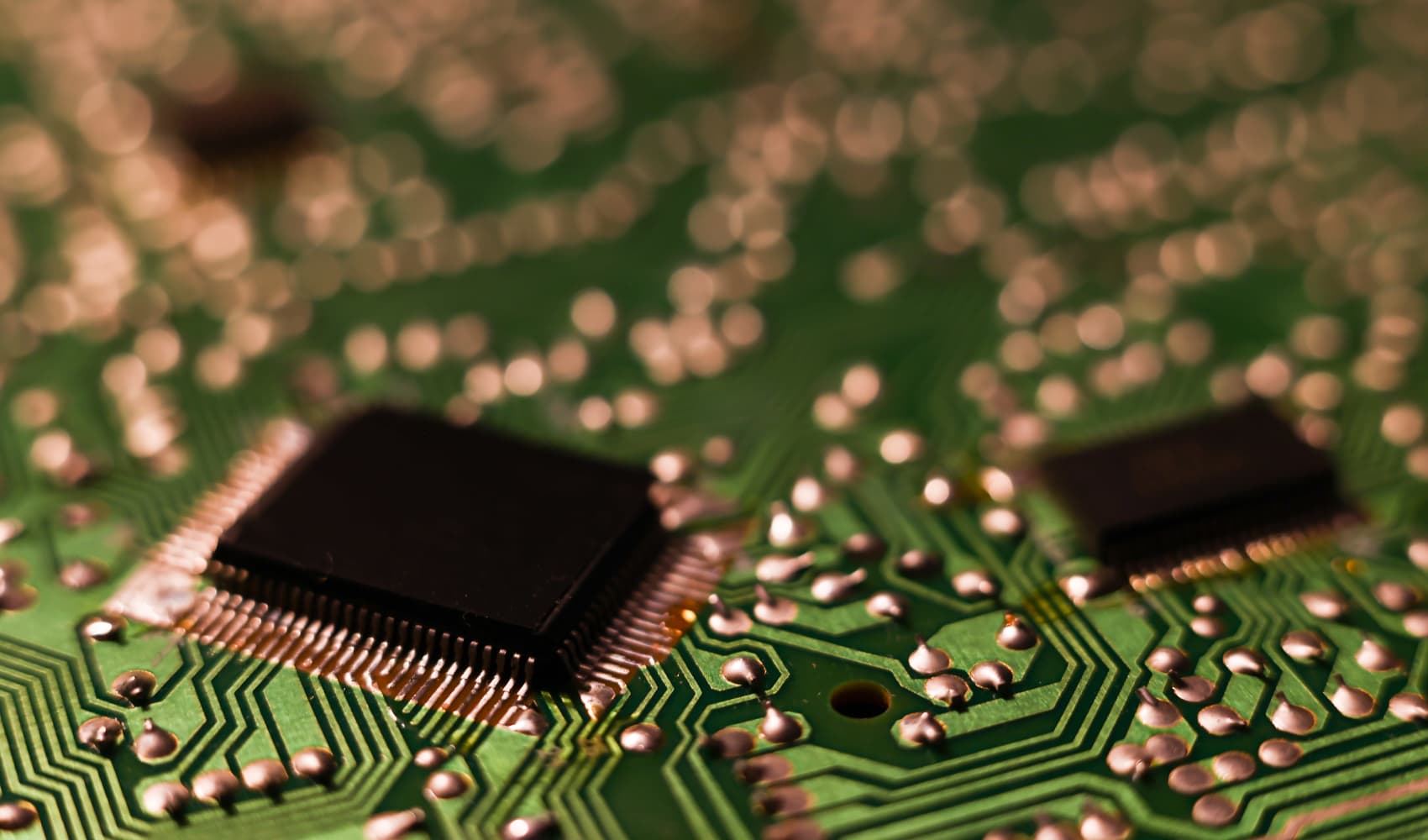
- Amazon and several startups showed off the latest in robotics at the e-commerce giant's re:MARS conference in Las Vegas last week.
- Robots are increasingly in the home and elsewhere, but they can only do a few useful tasks.
- Amazon is expanding its team focused on consumer robotics and it says Astro won't be its last home robot.
Electronics companies have for years paraded around flashy, futuristic prototypes of consumer robots. They've pointed to a not-too-distant future where people will have roaming robot helpers around their home that can do the dishes or even act as a personal masseuse. So far, few of those predictions have panned out, and they largely remain the stuff of science fiction.
Last week, at Amazon's re:MARS technology conference in Las Vegas, the e-commerce giant and other technology companies in attendance showed off the latest in robotics.
I noticed there weren't bold marketing proclamations of "robot butlers" or "AI dogs" as I walked the show floor. The robots were designed to look more practical, and many of the devices could only do a few simple tasks.
Take Amazon's Astro robot, for example. The company last September unveiled the long-rumored home robot, which costs $1,000 for invitation-only shoppers. It will cost $1,500 once it launches publicly at a date yet to be announced. At re:MARS, Astro greeted visitors of a mock smart home tricked out with an array of internet-connected devices.
At roughly two feet tall, Astro appears similar to a tablet on wheels. It can follow you around the house and play music, or carry drinks in a cup holder built into the device. Astro has a camera perched on top of a periscope that can rise up high enough to keep an eye on your home while you're away. It can dance to disco in your kitchen.
Money Report
Beyond those features, Astro's most basic functions aren't too different from those offered by other, cheaper Amazon-branded devices with its Alexa digital assistant. For example, it can deliver reminders, set alarms, make a video call or play a YouTube video, similar to an Echo Show smart display.
And even though Astro is billed as a household robot, it can't follow you to every room, that is if you have a place with interior stairs, because it can't go up and down them. It also doesn't have hands, so it can't retrieve items.
Get a weekly recap of the latest San Francisco Bay Area housing news. >Sign up for NBC Bay Area’s Housing Deconstructed newsletter.
"The technology to safely go up and down stairs at consumer robot price points is beyond the state of the art," Ken Washington, Amazon's vice president of software engineering for consumer robotics, told reporters last week. "So it's something we're looking into. Can we do that at a lower price point? Are there technologies that allow us to solve that problem inexpensively, safely and reliably? Today it's not within the state of the art, but it doesn't mean it won't be one day."
In an interview, Washington made clear that this isn't the final version of Astro, nor is it the company's last robot. Amazon is also considering opening up Astro to third-party developers and allowing them to build new skills, said Washington, who joined the company last June after serving as Ford's chief technology officer.
Doing so could potentially fast-track the process of making Astro smarter and more useful.
"We know part of the scaling algorithm has to be engaging others, just like we did with Alexa," Washington said. "That's something we're thinking very hard about."
Astro's home security, entertainment and remote tools for caring for elderly family members have been popular features among early users. Amazon says it was most surprised to find that users want more features that let Astro interact with their pets.
"One customer tried to enroll their cat in visual ID [Astro's facial recognition feature], which didn't work," Washington said. "Now we're wondering, should we enroll cats in visual ID?"
Amazon does know a thing or two about robots: It launched Amazon Robotics and focused on automating aspects of its warehouse operations a decade ago when Kiva Systems was acquired for $775 million.
In the years since, it has expanded beyond industrial robotics, launching a consumer robotics division within Lab126, its secretive hardware unit.
The division has been growing, and last month opened a new consumer robotics center in Bangalore, India, where Washington said Amazon plans to hire dozens of software engineers to work on Astro. Amazon tested Astro in real and mock homes in Chennai, a city located on the country's east coast, he added.
The Astro team is working on making it more natural for users to hold a conversation with the device, which primarily communicates with chirps and a pair of circles on the screen that are meant to resemble eyes.
"Today, interaction with Astro is very transactional," Washington said. "When you talk to your partner, or your spouse, or your kids, or your friend, you don't say, 'Bob, what's the weather?' You just don't talk that way. So we're thinking about ways to make it more natural to have a dialogue with Astro."
Embodied, an AI startup backed by the Alexa Fund, Amazon's venture capital arm, is also trying to make talking to robots more natural, but it may have an easier time doing so given its target customer.
It has been selling Moxie, a squat, friendly AI robot "companion," since 2020. In a conversation at re:MARS, Caitlyn Clabaugh, a robot-learning scientist at Embodied, said Moxie is meant for kids between 5 and 10 years old and is designed to help teach them social and emotional skills.
"There's a huge market for robot companionship, and kids are so adaptable to new technology," Clabaugh said, adding that Embodied has been surprised by how naturally children have taken to conversing with the robot.
Moxie is priced at $1,000 and can't move around. But it can gesture by moving its arms. An LCD screen is built into Moxie's head, which is backlit by an internal projector that gives the device an expressive, cartoonish face.
More robots are coming to the workplace
Another robot on display at re:MARS was Labrador Retriever, a cube-shaped device on wheels that more closely resembles a coffee table than Rosey from "The Jetsons." It has no humanoid features, like mechanical arms or legs, but it can fetch items around your home.
The Labrador Retriever uses an accordion-like system for lifting up and down, while an automatic retrieval feature enables it to pick up trays of items that are on a flat, open surface like a countertop or table.

Labrador Systems, which is backed by Amazon's Alexa Fund and co-founded by Mike Dooley, a former vice president at Roomba maker iRobot, developed the device to assist people with chronic illness or diseases that may restrict their range of motion. The Labrador Retriever can help make household chores easier, by carrying laundry or other heavy objects, say, and it can deliver meals.
Labrador Systems also is testing the device in senior living homes, which Dooley said in an interview is "apt timing" given the nationwide labor shortage. Dooley was adamant that the robot isn't meant to replace workers, rather is designed to relieve them of some tedious tasks, giving them more time to interact with residents.
Machines are increasingly working alongside humans in Amazon's warehouses. The company last week debuted two new devices, Proteus and Cardinal, that will join the roughly 520,000 robots already in its fulfillment and sorting centers.
Amazon says Proteus is its "first fully autonomous mobile robot." Traditionally, Amazon has kept its industrial robots cordoned off in restricted areas of its warehouses where they don't interact with employees. The company said it believes Proteus can safely incorporate robots in the same physical space as people.
Proteus and Cardinal, a robotic arm, are aimed at reducing some of warehouse workers' most strenuous tasks, like moving heavy objects and repetitive turning and twisting motions. This is especially critical for Amazon, which has faced a steady drumbeat of criticism over its labor record and employee injury rates.
Amazon warehouse workers in the U.S. suffered serious injuries at twice the rate of rival companies in 2021, according to a recent study by a coalition of labor unions, based on data submitted to federal safety regulators.
Amazon CEO Andy Jassy has pushed back on this data and defended the company's safety record. Amazon also has pledged to make safety and employee satisfaction a greater priority within the company, vowing to be "Earth's Best Employer."
Amazon Robotics head Tye Brady said last week that automation is a key part of increasing safety, although that prospect has been debated. An investigation by the Reveal from the Center for Investigative Reporting found the company's warehouses with robots have higher injury rates than facilities without automation.
On stage at re:MARS, Brady described how Amazon is using robots to get packages prepped and ready to ship out, but he asserted the job can't be done without people.
"It is a symphony of people and machines working together to do this," Brady said. "We index highly on safety in order to do that job, but you can't do one without the other. We could not achieve what we've done throughout the pandemic without having the right blend of automation and our amazing employees on [the] front line."






